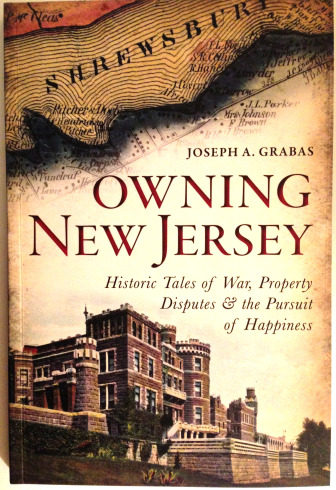Here is an article by Egbert T. Bush about the Copper Hill neighborhood I have been writing about recently, with additional comments from me.
mills
Kitchen’s Mill
The Mill in Sand Brook
Original version published in “The Bridge,” Fall 2002
This article precedes the next episode in my series on the route of the Delaware Flemington Railroad, a rail line that was surveyed, but never built. It was planned to run right through the village of Sand Brook, very close to the old mill.
Sergeant’s Mills, part two
After this article was published, some careful readers alerted me to a few errors which merit attention.
Sergeant’s Mills, part one
In a recent post on the life of John P. Rittenhouse, I mentioned that his parents, Samuel & Hannah Rittenhouse, lived near the covered bridge in Delaware Township. This reminded me of the interesting article written by Egbert T. Bush about the history of the area around Sergeant’s Mill.
Brookville & Horne’s Creek
In 1929, Egbert T. Bush wrote an article about the neighborhood of Brookville, a hamlet just south of Stockton, on the Delaware River. It seems appropriate to publish the article now because it discusses a neighborhood near the homes of John and Gershom Lambert, who’s farms were described in my previous posts (The Two Lambert Farms, Sen. Lambert’s Farm and The Gershom Lambert Farm). It also happens that Mr. Bush himself lived not far from Brookville; his farm was on Sandy Ridge Road close to Route 523, just north of Stockton.
Sen. Lambert’s Farm, pt 2
A continuation of the article on Sen. John Lambert’s home farm.
Having discovered which of two farms belonged to Sen. John Lambert, I realized how amazingly interconnected the Lambert family was. That will hold true even more so here in part two. However, I have not done all the research that could have been done before publishing this article. It was a question of when to stop.
The Town of Clinton Is Born
Clinton Began As a Speculative Venture
The history of the town of Clinton is a fascinating one. The borough has so much character and charm, but it had a rocky start.
The Conklings, Father and Son
This is a continuation of the story by Egbert T. Bush of the “Biggest Log Ever Brought to Stockton,” in which he wrote about the owners of the Stockton Sawmill and the Stockton Spoke Works. These Hunterdon industrialists took risks to build their businesses, and sometimes failed badly. Here are two more examples of failure and success.
Biggest Log Ever Brought to Stockton
Giant Oak Caused Trouble Before It Arrived at the Mill.
A Big Event in the Town
by Egbert T. Bush, Stockton, N.J.
published in the Hunterdon Co. Democrat, September 5, 1929

This is another in a series of articles by Egbert T. Bush on the subject of Hunterdon County trees. Whenever Mr. Bush writes about an event, there is always an interesting back story—often more than one. This article about Stockton takes us north to Kingwood and Alexandria, and south to Lambertville. There are a few people of particular importance: John Finney, William V. Case, Edward P. Conkling and his father Rev. Cornelius S. Conkling. The biographies of Finney and Case can be found at the end of Mr. Bush’s article. The Conklings will appear in a subsequent post.
What Comes from Owning the Land
In My Library: Owning New Jersey, Mapping New Jersey, Owning the Earth and New Jersey Linseed Oil Mills
 Owning New Jersey; Historic Tales of War, Property Disputes & the Pursuit of Happiness
Owning New Jersey; Historic Tales of War, Property Disputes & the Pursuit of Happiness
by Joseph A. Grabas, published by The History Press, 2014
What a great name for a book. I’ve wanted to own this book for decades, even though it did not exist until now. Joseph Grabas is a well-known figure among New Jersey historians, for his ability to take what he has learned from his many years as a title searcher and turn it into fascinating New Jersey history. He’s done a beautiful job of showing how interrelated land ownership and politics can be, and how those systems have influenced New Jersey history right from its very beginning. It’s also a very readable book. It is easy to overlook how much we can learn from old records—records that seem to be dry and uninteresting, unless an inquiring mind like Mr. Grabas takes a close look at them. Then they reveal great human dramas, both comedic and tragic. This book has much to teach us.